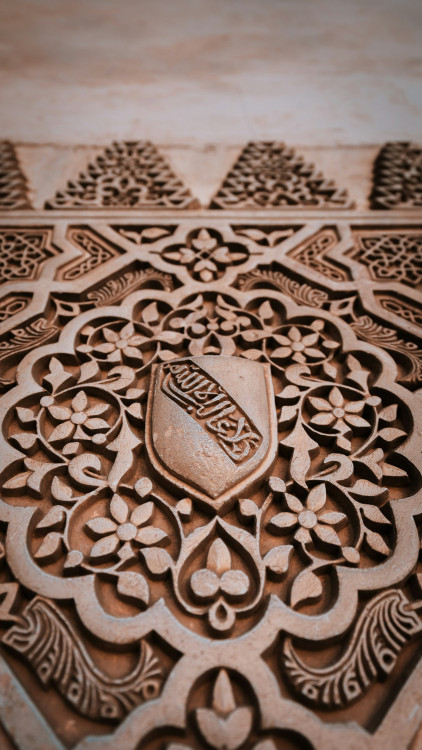Great Forgotten Figures from Granada I

SULTANA FATIMA BINT AL-AHMAR
We begin a new section, recounting stories of the great historical figures from Granada who, although time has relegated them to oblivion, influenced the history of this beautiful city.
SULTANA FATIMA BINT AL-AHMAR
The exact year of Sultana Fatima's birth is unknown, although it is estimated to have been between 1260 or 1261, as she died in 1349 at over 90 years old. Born and died in the Alhambra, a great privilege for this woman descended from Emir Muhammad II -1273-1302- and Nuzha, cousin of the former. Fátima received great recognition at the time of her death, which occurred during the reign of her grandson Yūsuf I, at dawn on February 26, 1349.
Among all the sultanas of Granada, Fatima stands out, daughter, sister, mother, and grandmother of sultans. Daughter of Muhammad II, sister of Muhammad III and Nasr, mother of Ismail I, and grandmother of Muhammad IV and Yūsuf I, the Nasrid dynasty was perpetuated through this woman until Muhammad XII, the young king. She led behind the scenes during the reigns of her son Ismail I and her two grandsons, Muḥammad IV and Yūsuf I, thanks to her great political acumen.
Daughter, sister, and granddaughter of kings of the Nasrid dynasty, she inherited her father Muhammad II's love for culture, a great patron of physicians, philosophers, and artists. Her father, Muhammad II, a man of vast culture, must have exerted great influence on the intellectual interests of his children, especially on Fatima. Ibn al-Jatib describes this emir as one who knew how to support scholars, physicians, philosophers, astronomers, poets, and who himself knew how to write and compose verses. Fatima dedicated herself to the cultivation of the science of barnāmaŷ or biobibliographical repertoires of masters and scholars, which is why she is likely to have integrated the list of wise women of Al-Andalus. In addition to her vast culture, the most remarkable aspect of Fatima's personality was her great political acumen, acquired throughout her life.
Historical Impact of Fatima
Fatima lived in Málaga, where she had moved after being married by her father to her paternal uncle, Abu Sa῾īd Faraŷ. Her first son Ismail I was born in 1279. From the Alcazaba of Malaga, in addition to living a life dedicated to her children, Fatima did not neglect the political events of Granada. This marriage allowed Abu Sa῾īd Faraŷ to be a key figure in the politics and government of Muhammad II, who entrusted him with the government of Malaga for his loyalty, honor, and bravery. Although he did not become an emir, he collaborated with Fatima in her decisions.
This was a dark time, during which Abu Sa῾īd Faraŷ and Fatima were removed from power, an opportunity seized by the couple to plot a revenge that would simultaneously solve both the family issue and the conflictive situation of the Nasrid kingdom. Given the climate of discontent among a sector of the Granada population with the government of Naṣr, Abu Sa῾īd Faraŷ did not decide to proclaim himself emir, as they had already attempted, but sent his son Ismail I to Granada so that he could be named emir. This event had the necessary support that helped turn the tide in the history of the Nasrid dynasty, due to the direct importance of the mother of the new emir, Fatima, and the significance of the sultana in the subsequent development.
It is presumed that there was a good relationship between Fatima and her brother, Emir Muhammad III, considering that she kept Abu Sa῾īd Faraŷ, her husband, in military functions during his government thanks to constant collaboration with the sultan. This attitude explains why both Fatima and her husband remained loyal to the sovereign when, in 1309, he was overthrown and forced to abdicate by his half-brother Naṣr, who imprisoned him and soon appeared drowned.
From this date onwards, the Nasrid kingdom suffered harsh sieges by the Castilians, Ceuta among other cities were lost. In 1314, Ismail I, Fatima's son, finally managed to enter Granada and take the Alhambra when his uncle Muhammad III was assassinated, and two days after the deposition of the deposed emir Naṣr to Guadix.
Fatima would have a good relationship with Ismail I, as the intervention of Fatima in the proclamation of her son seems quite clear, being this appointment of Ismail I the only possible recourse to maintain the succession line of the Nasrid dynasty in power. When her son, Emir Ismail I, was assassinated in 1325, Fatima's involvement in Nasrid palace matters intensified, as her grandson Muhammad IV was proclaimed emir at just 10 years old, the same day his father had been murdered. This event caused the sultana to act as regent alongside a preceptor, the vizier Ridwān. However, during this time, Fatima did not limit herself to domestic matters alone but had to deal with state affairs to protect Muhammad IV's reign. This was the period of greatest political activity for this woman, which is why Fatima is called by Ibn al-Jatib in his historiography the grandmother of the sultan. Muhammad IV reigned until he was assassinated in 1333.
He was succeeded by his younger brother Yusuf I. Under the reign of Yusuf I and later under that of his son Mohammed V, the Nasrid kingdom of Granada reached its maximum splendor. Yusuf I developed art and culture, which had been nurtured by his grandmother Fatima. From the reign of Ismail I, Fatima's son and Yusuf I's father, until the death of the Sultana of the Alhambra, Fatima's silent but firm hand in all state affairs is evident.
Yusuf I, grandson of Sultana Fatima
Under the reign of Yusuf I, who was 15 years old when he was named successor to his brother, the Alhambra was built. We may wonder where a young emir of only 15 years old obtained the knowledge to undertake such a work? The answer lies in the contacts and wisdom of his grandmother, Sultana Fatima. We owe to them the Hall of Comares with its ceiling representing the seven heavens, reflected in numerology, the Hall of the Boat, the Court of the Myrtles, the Court of the Lions, the Gate of the Esplanade, called the Gate of Justice, the Tower of the Captive, the Tower of the Seven Floors, the Royal Baths, and other works that have disappeared today, while in the lower city, Granada, the madrasa or university was built, the main mosque, where the church of the Sagrario now stands next to the Cathedral, and the funduq called Corral del Carbón.
All these works could be carried out by Yusuf I, thanks to the tutelage of his grandmother Fatima, which became essential due to the young age of her grandson when he ascended the throne. On the other hand, Fatima advised him to sign a truce with Alfonso XI after the 1342 battle in which the Nasrids lost Algeciras, remembering that they had already lost Alcalá la Real, Priego, and Benamejí. During this truce, Fatima took the opportunity to advise and put her grandson in contact with the wise men who would allow the construction of the Alhambra. Her seal and contribution to the evolution of the monument lie in conceiving a palatial complex that reflected the power of the Nasrid kingdom, glorified Islam (more specifically linked to Sufism, where the Alhambra became a center for these ascetic philosophers and wise men), and made Granada a worldwide cultural reference point as Great Cordoba was centuries before.
Fatima bint al-Aḥmar is a figure of historical significance, witnessing her grandson Yusuf I's death at the hands of a slave in the Alhambra's own stables. Once again, Fatima's firm hand weaves the plot of the kingdom of Granada behind the scenes.
Her great influence in the political sphere of the Alhambra during the turbulent reigns of her two brothers, Muhammad III and Naṣr, her eldest son Ismail I, and her two grandsons, Muhammad IV and Yūsuf I, is noteworthy. It is worth noting that thanks to Sultana Fatima, a curious phenomenon of the transmission of power through the female line within the Alhambra lineage occurred, as her brothers died without descendants, and Fatima managed to get her son to the throne, thus continuing the Nasrid lineage.
As we can see, the history of the Nasrid dynasty was not easy, as it was marked by conspiracies, dethronements, imprisonments, assassinations, battles, and poisonings, etc. This was a fact that forced Fatima to assume roles of great responsibility. Not only did she have to care for the family, the political events, diplomacy with Christian kingdoms, the defense of the succession rights of her children, etc., but the famous Sultana Fatima also shaped a unique figure and is one of the most influential women in the entire Nasrid dynasty. In this way, she left a trajectory of such importance in the dynasties of the following years that she is remembered for her valor and good deeds.
Bibliography
www.lassnet.es/index.php?id=91
BÁRBARA BOLOIX GALLARDO ANUARIO DE ESTUDIOS MEDIEVALES, 46/1, January-June 2016, pp. 269-300 Photo by Izuddin Helmi Adnan on Unsplash




